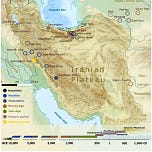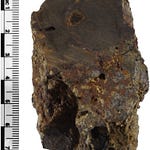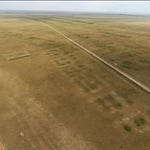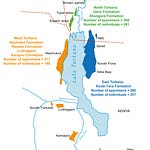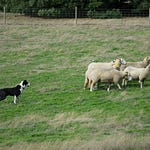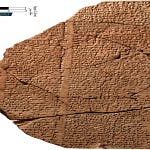“The archaeological record shows shifts in empires and cultures. But beneath the soil, the genetic signal told a different story—of people staying put, generation after generation.”
A Long Memory in the Zagros
On the northern edges of the Iranian Plateau, where the foothills of the Alborz Mountains give way to fertile valleys and ancient caravan trails, archaeologists and geneticists have uncovered an unexpected thread in the human story. This is not a tale of invasion or conquest, nor of radical demographic upheaval. Instead, it is a portrait of long-term continuity—one that stretches over 3,000 years of human occupation, from the Copper Age through the rule of the Sassanid Empire.

In a new study published in Scientific Reports1, researchers analyzed ancient DNA from 50 individuals recovered at nine archaeological sites across northern Iran. These genomes, some dating back to 4700 BCE, reveal a remarkable degree of genetic stability across time. Despite profound cultural shifts, shifting trade networks, and the arrival and fall of empires, the underlying genetic profile of people in this region remained strikingly consistent. The result is one of the most extensive and well-supported cases of diachronic genetic continuity ever documented in the ancient world.
Continuity in a Crossroads
The Iranian Plateau has long been described as a crossroads of civilizations. Nestled between Mesopotamia, Central Asia, the Caucasus, and the Indian subcontinent, this region has seen waves of migration, commerce, and political upheaval for millennia. Yet the latest findings from Amjadi and colleagues complicate this long-held view. While it is true that the region was anything but isolated, the genetic data from its inhabitants suggest that movement and cultural exchange did not necessarily equate to population turnover.
The study focused primarily on northern Iran, particularly the Caspian region—a zone that played host to the Achaemenid, Parthian, and Sassanid empires. These empires were expansive, multiethnic, and deeply embedded in the trade routes of the ancient Silk Roads. And yet, even under these dynamic circumstances, the DNA tells a quieter story: one of people who stayed rooted, generation after generation. These ancient individuals, some buried with goods from distant lands, nonetheless belonged to a lineage that had persisted locally for thousands of years.
A Genetic Tether Through Time
The researchers sequenced 23 mitochondrial genomes and 13 nuclear genomes from remains spanning more than three millennia. From sites such as Gol Afshan Tepe, Liarsangbon, and Vestemin, the sampled individuals ranged in time from the early Chalcolithic to the early second millennium CE. What emerged from their genetic profiles was a consistent ancestral signature tracing back to the early Neolithic farmers of Ganj Dareh—a well-known archaeological site in the central Zagros.
Maternal lineages were dominated by West Eurasian haplogroups such as H, J, U, T, and HV, which continue to appear in modern Iranian populations today. Paternal lineages also showed deep roots, with J1 and J2 haplogroups—often linked to Near Eastern Neolithic expansions—maintaining a strong presence across the centuries. In supervised ADMIXTURE analyses and principal component plots, the majority of the newly sampled individuals clustered closely with Neolithic Iranian genomes. This alignment held steady from the Chalcolithic through the Sassanid period.
The study also uncovered subtle evidence of diversity: minor contributions from South-Central Asia, Anatolia, and the Levant, particularly during the Bronze Age. However, these contributions were not large enough to disrupt the underlying genetic continuity. They appear more as traces of interaction—markers of trade or intermittent movement—than signs of large-scale population replacement.
When Culture Changes, But People Stay
This genetic continuity finds an echo in the archaeological record. For instance, catacomb-style burial traditions, first seen around 3000 BCE in southeastern Iran, appear again in Parthian contexts more than two thousand years later. This suggests a cultural persistence across time and space, likely reinforced by long-term regional occupation. Similarly, artificial cranial deformation—a deliberate reshaping of skulls seen as a cultural marker—was found in individuals from Gol Afshan Tepe, linking them with earlier Neolithic sites in the Zagros, such as Ali Kosh.
In many other regions of Eurasia, the rise of new technologies or elites has been tied to demographic change—pastoralist expansions from the Pontic Steppe, for example, reshaped the genetic landscape of Bronze Age Europe. But in the case of the Iranian Plateau, empire did not equate to erasure. The Achaemenids, Seleucids, Parthians, and Sassanids introduced new governance, material cultures, and systems of trade. Yet they governed a people who remained, in large part, genetically consistent with their distant ancestors.
Methods That Look Beyond Bones
To piece together this long arc of continuity, the team combined cutting-edge ancient DNA techniques with robust comparative datasets. Sequencing strategies included shotgun sequencing and hybridization capture using the 1240k SNP panel. Comparative analysis drew from the Allen Ancient DNA Resource and modern reference genomes, alongside statistics like qpAdm and f4 tests to estimate admixture proportions.
The researchers also examined runs of homozygosity to evaluate population structure and inbreeding. Most individuals exhibited low ROH signals, suggesting relatively large and outbred local populations. Even as cultural centers like Shahr-i Sokhta rose and fell, the genetic makeup of surrounding communities showed remarkable resilience.
Why Continuity Matters
This study doesn’t just contribute another ancient genome to the global dataset. It shifts how we interpret cultural transformation in archaeology. The assumption that major shifts in material culture, urbanization, or empire correspond to new populations is often implicit in archaeological narratives. But here, the evidence points in a different direction. People may adopt new languages, practices, and technologies while remaining, genetically, descendants of long-standing local populations.
The Iranian Plateau, particularly in its northern reaches, thus becomes a test case for cultural resilience. Rather than viewing human history as a succession of replacements, the findings from this study invite us to see it as a process of adaptation and continuity. The Silk Road didn’t erase these communities. Empires didn’t overwrite them. Instead, they absorbed and were shaped by them.
Related Research and Further Reading
Lazaridis, I. et al. (2016). Genomic insights into the origin of farming in the ancient Near East. Nature, 536, 419–424. https://doi.org/10.1038/nature19310
Narasimhan, V. M. et al. (2019). The formation of human populations in South and Central Asia. Science, 365(6457). https://doi.org/10.1126/science.aat7487
Jeong, C. et al. (2019). The genetic history of admixture across Inner Eurasia. Nature Ecology & Evolution, 3, 966–976. https://doi.org/10.1038/s41559-019-0878-2
Allentoft, M. E. et al. (2024). Population genomics of post-glacial Western Eurasia. Nature, 625, 301–311. https://doi.org/10.1038/s41586-024-07040-2
Amjadi, M. A. et al. (2025). Ancient DNA indicates 3,000 years of genetic continuity in the Northern Iranian Plateau. Scientific Reports, 15, 16530. https://doi.org/10.1038/s41598-025-99743-w
Amjadi, M.A., Özdemir, Y.C., Ramezani, M. et al. Ancient DNA indicates 3,000 years of genetic continuity in the Northern Iranian Plateau, from the Copper Age to the Sassanid Empire. Sci Rep 15, 16530 (2025). https://doi.org/10.1038/s41598-025-99743-w

